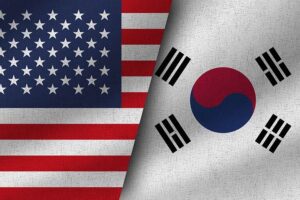Trade between India and the United States is huge, and it touches many things we use every day, from T-shirts and phones to medicines and almonds. When tariffs (import taxes) go up, costs often rise across these supply chains.
We’ll break down what’s going on, who’s affected, and what comes next; all based on the latest official data and reporting.
How big is the trade relationship?
On the goods side alone, the U.S. says total trade with India was about $129.2 billion in 2024 (exports plus imports). Services trade, things like IT, consulting, travel, and education, added $83.4 billion more in 2024. Put together, goods and services between the two countries comfortably cross the $200-billion mark.
India’s own figures for FY2023–24 (its fiscal year) show $77.5 billion of exports to the U.S. and $40.7 billion of imports from the U.S. The small differences reflect different counting periods and methods, not a contradiction.
What are the big items moving both ways?
India’s best-known exports to the U.S. include pharmaceuticals (generic medicines), IT and electronics, gems and jewelry, engineering goods, refined fuels, and cotton apparel. The U.S. sends India oil and gas, machinery, aerospace parts, chemicals, and electrical equipment. These lists capture many everyday products, or the parts that go into them.
What is a tariff, and why should you care?
A tariff is a tax on imported goods. Importers pay it at the border and usually pass most of it along the chain; first to factories and retailers, and finally to the common people at checkout. That’s why tariffs can feel like a hidden tax.
So why did this tariff fight start?
Tensions go back to 2018, when Washington added national-security tariffs on steel (25%) and aluminum (10%). In 2019, the U.S. also ended India’s duty-free access under the GSP program. India replied with extra duties on items such as apples and almonds. A thaw came in June 2023, when both sides settled six WTO disputes and India removed those retaliatory tariffs on several U.S. farm products.
In 2025, tariffs returned to the headlines. The U.S. announced a baseline 10% tariff on most imports and a higher rate for some partners; for India, the higher rate is 26%, with separate measures also affecting steel and other sectors. India and the U.S. began talks toward a Bilateral Trade Agreement (BTA), and there was even a 90-day pause on parts of the tariff package while talks proceeded. Separately, reporting indicates a 25% U.S. levy on Indian goods linked to disputes over India’s oil purchases from Russia, with India estimating about 55% of its exports could be hit.
Who gets impacted, and how?
Think of three groups:
- Workers and exporters in India’s textiles, gems & jewelry, auto parts, shrimp, and other labor-intensive lines face tougher access to their top market; orders can slow or shift to competitors. India’s own think-tank analyses warn that these sectors feel the sharpest pinch.
- Manufacturers on both sides, including car makers, electronics assemblers, and machinery firms, see input costs rise when parts face new taxes. Those costs ripple through supply chains.
- Consumers eventually face higher shelf prices where pass-through is strong (clothing, furniture, electronics) or where switching suppliers is hard (certain foods and drugs). Evidence from past tariff waves shows that much of the cost reaches households.
Will this hit things we use every day, like clothes, medicines, groceries, etc.?
Yes, it can. American shoppers buy plenty of Indian-made clothes and wallet-friendly generic medicines, while Indian companies keep their refineries running on U.S. crude oil and rely on American heavy machinery for their factories. If these lines face tariffs (or if parts used to make them do), prices can creep up, or brands may switch suppliers, which can also affect price and choice.
How much extra will people pay?
It depends on how broad the tariffs are and how much firms pass on. As a rough guide, one widely cited estimate finds that broad U.S. tariff packages can cost the typical American household over $1,200 per year in higher prices. Newer modeling shows the bite can be larger if rates are higher or coverage is wider, especially for apparel. The exact hit varies by country and product mix, but the direction is clear and is spiralling upward.
Who “wins” a tariff war?
In the short run, a few protected producers may gain. Over time, most analysts see net losses: exporters lose markets, shoppers pay more, and investment slows because of uncertainty. That is why both governments still say they prefer negotiated solutions.
Is there a way out?
Yes. Negotiation and targeted fixes. In April 2025, the U.S. and India set terms of reference to negotiate a Bilateral Trade Agreement aimed at lowering barriers and expanding market access. Back in 2023, the two governments sat down, settled six long-running WTO disputes, and India dropped the extra duties it had slapped on U.S. apples, almonds, lentils, and other farm goods, thus showing that real talks can cool a tariff fight. Real progress would likely include narrower tariff lists, product-specific exclusions, and clearer rules on agriculture, digital trade, and standards.
Bottom line
The India–U.S. trade relationship is large and valuable. Tariffs, by design, raise the price of traded goods. That cost rarely stops at the port; it tends to land in shopping carts and production lines.
The good news is that both sides are talking. If negotiations stay on track, households and businesses on both continents should see less uncertainty and fewer surprise taxes built into everyday prices.







